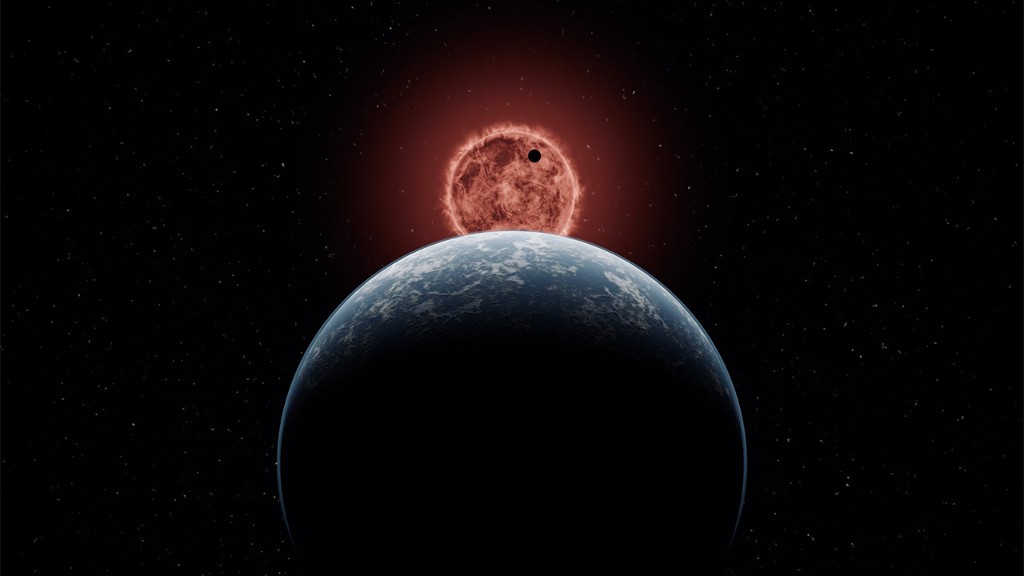A team of astronomers from the University of Liège announced the discovery of a previously unknown super-Earth and a mini-Neptune orbiting the star TOI-2096. They are in orbital resonance to each other.

TOI-2096 is a red dwarf located at a distance of 156 light-years from Earth. During the study of data collected by ground-based observatories and the TESS space telescope, the researchers found periodic changes in the brightness of the star. They are caused by the transits of two exoplanets orbiting it.
The radius of the inner exoplanet TOI-2096 b exceeds the radius of the Earth by 20%. The equilibrium temperature of its surface is estimated at 172 °C. The outer exoplanet TOI-2096 c is a mini-Neptune. Its radius is 1.9 times that of the Earth, and the equilibrium surface temperature is estimated at 76 °C.
The find is interesting for several reasons. The newly found exoplanets belong to classes of bodies that have no analogues in our Solar System. While TOI-2096 b is a rocky super-Earth, TOI-2096 b should have a rocky core surrounded by a massive shell consisting of lighter elements — various gases and/or water.
Another interesting fact is that the orbits of exoplanets are in a 1:2 resonance. While the outer exoplanet makes one orbit around the star (its orbital period is 6.38 days), the inner one manages to make two orbits (its orbital period leaves 3.12 days). Due to such synchronization, they exert a powerful gravitational effect on each other, which leads to delays and accelerations in the time of their transits.
Astronomers plan to use this circumstance to calculate the masses of exoplanets. This will allow us to better understand the features of their internal structure and, in turn, will help us better understand exactly how this system is formed.
According to https://www.exotic.uliege.be
Follow us on Twitter to get the most interesting space news in time
https://twitter.com/ust_magazine

